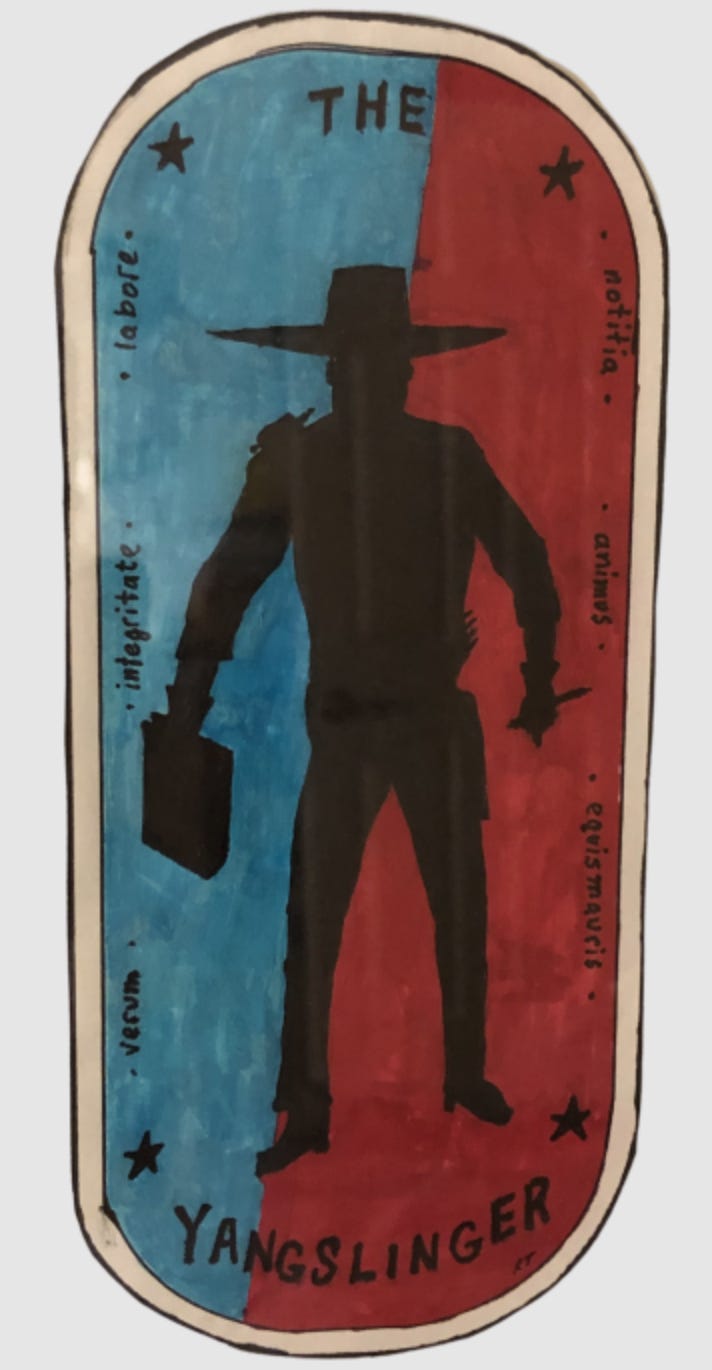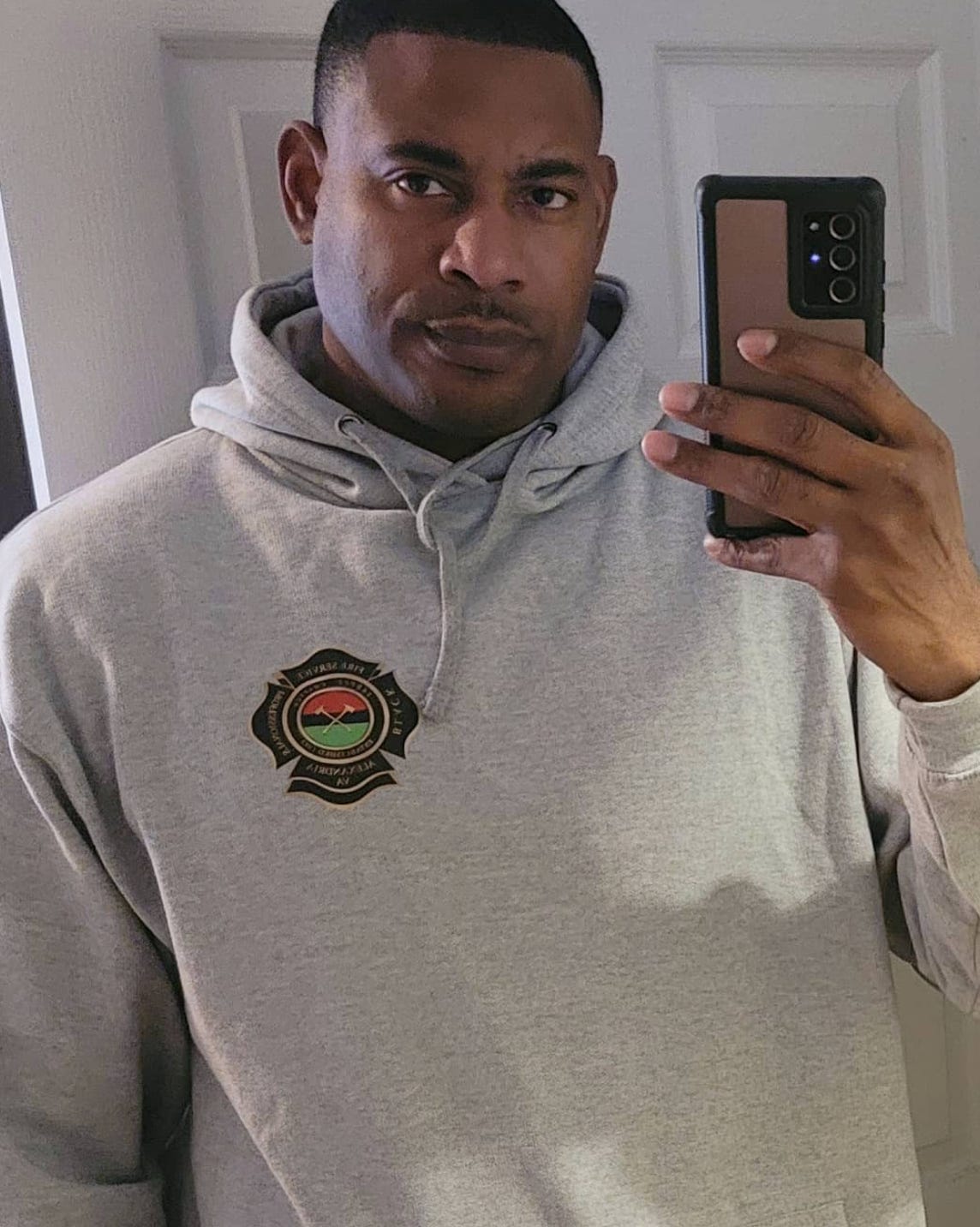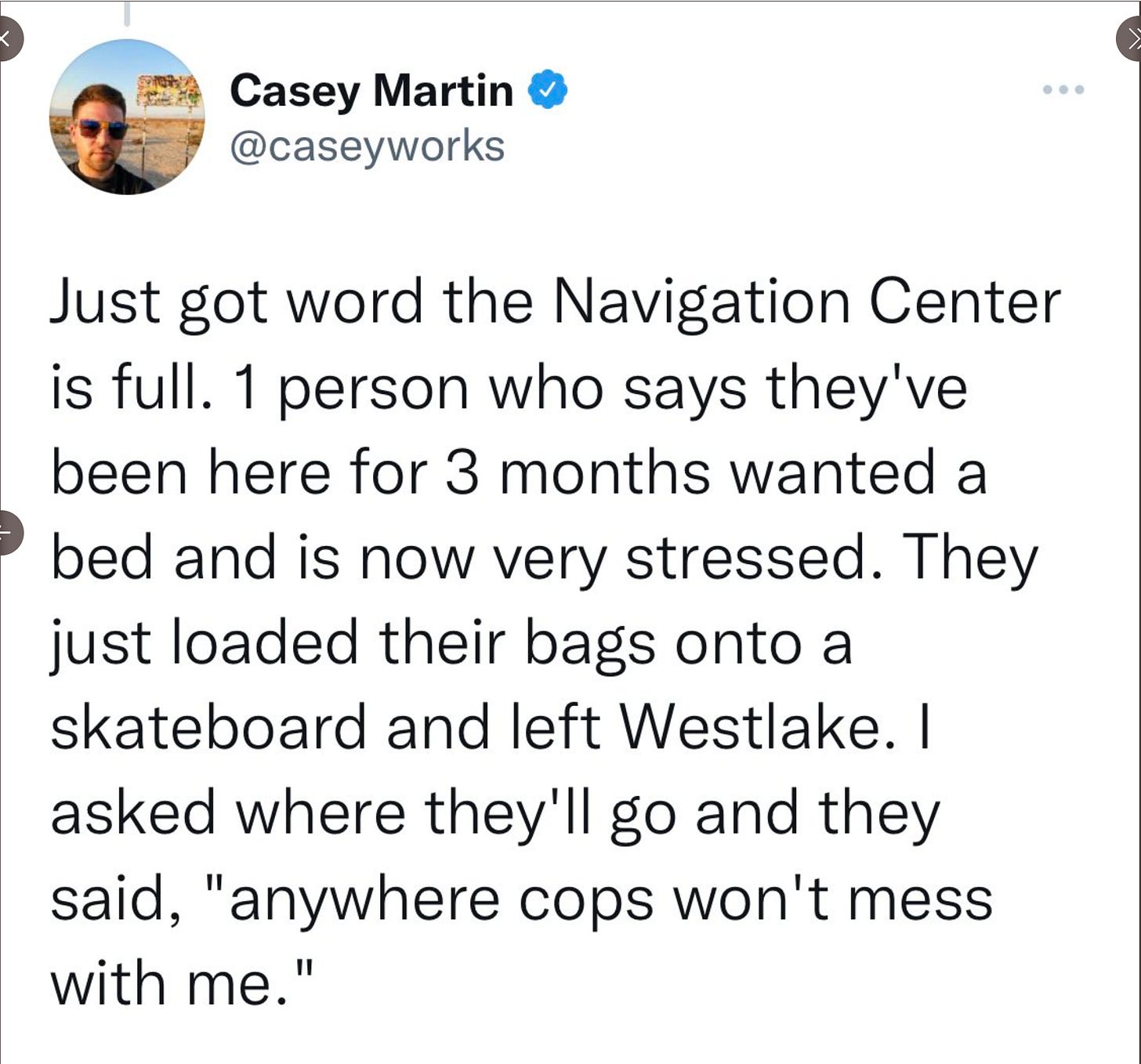The Yang Slinger: Vol. XXII
The NCAA Tournament is here. You're a young journalist about to cover your first-ever March Madness. Some thoughts on how to make the most out of it.
In the early March days of 1998, I flew from New York to Sacramento to cover the first two rounds of the men’s NCAA Tournament for Sports Illustrated.
While en route, I somehow happened to be seated alongside the members of the Nicholls State basketball team. At the time, the Colonels were 19-9 and the recently anointed champions of the Southland Conference. Their best player was a 6-foot-3 senior guard named Russell McCutcheon, who averaged 16.7 ppg while shooting below (egad) 38 percent. The second-best guy was Kenderick Franklin, a 6-foot-6, 180-pound forward. Franklin: A. Was a three-time First Team All-Southland Conference selection; B. Resembled a very happy pretzel stick.
Such was the state of Nicholls State hoops.
Anyhow, I introduced myself to Rickey Broussard, the team’s eighth year coach, then whipped out my notepad and said (more or less), “Do you think you guys have a realistic chance to upset Arizona?”
“Yes,” Broussard replied. “I really do.”
Later, the man added: “We just feel it’s the year of the Colonels.”
At this point, I should mention Nicholls State was a No. 16 seed, traveling some 2,200 miles to be fed to not merely one of the best teams in the country, but arguably one of the best teams of the decade. These were the 27-4 Wildcats of Coach Lute Olson, whose roster included future NBAers Mike Bibby, Michael Dickerson, Jason Terry, A.J. Bramlett and Miles Simon. They were really fucking good, and as much traveling rock band as hoops squad.
Deep down, I’m sure I knew the Colonels had no shot. But instead of rolling with that belief, I decided I’d own Nicholls State. I’d know every fact, every figure, every player, every assistant coach. I talked up Franklin and McCutcheon, talked up Broussard, even talked up the young woman in the mascot outfit. The morning of the game, I called my editor from the arena and said, “If there’s an upset, I’ll have the story.”
There.
Was.
No.
Upset.
After a mere five minutes, the Wildcats were up 19-9. At halftime, the score was 54-29. This wasn’t one of those games where, if a few things broke differently, Nicholls could have hung. No, no, no. Were the 1998 Wildcats to play the 1998 Colonels 1,000 times, the 1998 Wildcats beat the 1998 Colonels 1,000 times. Why, when the game ended members of the defeated squad lined up and asked their vanquishers for autographs.
But here’s the thing: Despite the lopsided outcome, I look back with genuine pride how (at age 25) I handled the situation. It was my first NCAA Tournament as a professional journalist, and my No. 1 goal was to be as prepared as humanly possible for every single storyline. So, yeah, Arizona wasn’t going to fall to Nicholls State. But had they, I’d have owned the greatest story in March Madness history.
Dammit.
All of that is my long-winded way of noting yet another run of college basketball bliss is upon us, thereby making this a perfect time to break down the mini-keys to NCAA Tournament coverage. And I’m not saying I’m The Expert here. Or even an expert. I’ve probably attended, oh, five March Madnesses—none in quite a spell.
But for young (aka college) journalists trying to establish themselves or expand their chops, this is the most glorious of seasons. There are bountiful opportunities. Chances of a lifetime. Ways to have your voices heard unlike ever before.
So …
First things first: If you’re a college journalist, or a stringer, and you’re viewing March Madness as a hyper-specific event that involves your team, well, you’re making an enormous mistake.
To illustrate, let’s take the familiar turf of my alma mater, the University of Delaware …
On Friday, the Blue Hen men will be playing Villanova in a first-round game in Pittsburgh. Now, if you’re Konner Metz, managing sports editor of The Review (UD’s student newspaper), you likely view the looming experience through a very narrow prism. That’s not an indictment of Konner or any college journalist—it’s simply the reality of limited experiences and antiquated advisers telling you the way things should be done. You travel to Pittsburgh, you attend the press conferences involving Delaware and Villanova players, you spend a solid 10 seconds giddily lingering within five feet of Seth Davis, you write and Tweet and podcast all about the Hens and Wildcats. Then, come game day, you sit court-side (or close to court-side) and watch your team lose by 18.1
The next morning, you shuffle back home with your complimentary March Madness seat cushion packed alongside your toothbrush and retainer.
The. End.
Well, that’s bullshit. Serious bullshit. As I noted a few paragraphs earlier, there are bountiful opportunities here. Chances of a lifetime. During Konner Metz’s run in Pittsburgh, not only will the Hens play Villanova, but Alabama-Birmingham will play Houston, Tennessee-Chattanooga will play Illinois and Loyola Chicago will play Ohio State. That’s six other teams, each with at least five coaches, each with a roster of 15 players.
So what to do? Let’s use, oh, UAB as an example.
Here is the Blazers’ roster …
Take a look.
Now take a closer look.
The Blazers are represented by young men from eight different states, as well as one (forward Ad Diedhiou) from Dakar, Senegal.
Now, take a closer closer look.
There’s a kid from Tallahassee named Quan Jackson. This year, Quan led Conference USA with 53 steals and made the USA All-Defensive Team. Before coming to UAB, Quan spent three years at Georgia Southern. His mother played softball at Tallahassee Community College. He’s a sports management major. He loves Hall & Oates and oysters.2
So what does that mean for Konner Metz, managing sports editor of The Review? It means if he’s smart and savvy and feels like milking the tournament for all he can, he’ll call two places ASAP:
The sports editor of the Tallahassee Democrat—home paper of Quan.
The sports editor of the Statesboro Herald—home paper of Georgia Southern.
If no one answers (no one will answer), he leaves a message. “Hello, my name is Konner Metz. I’m a student journalist from the University of Delaware covering the Pittsburgh regional for our student newspaper. As you probably know, Alabama-Birmingham is in the same region, and one of the team’s players is Quan Jackson, who you might remember from [FILL IN THE BLANK WITH PERTINENT REGIONAL INFORMATION]. I would love to file a piece for you guys from here, if you’re interested. My number is 719-266-2837. I hope to hear from you. Thank you.”
Konner Metz follows by making the same call for … every … single … player (and coach) on the UAB roster.
“Hello, sports editor of the Gainesville (Ga.) Times. My name is Konner Metz. And there’s a player on the UAB roster named K.J. Buffen from your town …”
“Hello, sports editor of the Oxford Eagle. My name is Konner Metz. And there’s a player on the UAB roster named K.J. Buffen who transferred from Ole Miss …”
“Hello, sports editor of the Buffalo News. My name is Konner Metz. And there’s an assistant coach for UAB named Ryan Cross who starred at the University of Buffalo in the mid 1990s …”
When that’s done, Konner repeats the same ritual for every single player and coach on the other five rosters. One. By. One. By. One. By. One. By. One. By. One.
It’s tedious. It’s irksome. It takes a shitload of elbow grease. Your pals will be out partying in Pittsburgh while you’re sitting by your phone.
But it will 100-percent work, and when (in the not-too-distant future) you’re applying for journalism gigs, having a shitload of March Madness clips will do you extraordinarily well. You’ll have loaded up on bylines and loaded up on dollars (well, not exactly loaded up. But you’ll make some spare change and a shitload of connections) and utilized the experience every way you possibly could.
But wait.
There’s more.
March Madness isn’t just a place to snag assignments. No, it’s a place to really do something with your writing.
At the expense of sounding overly harsh, one of the great problems I see with modern young sports journalism is a jarring lack of color and imagination.
Pick a student newspaper.
Any student newspaper.
With rare exception, the basketball ledes are all sort of the same. Here, take a gander at a random few …
Now, none of the above work is bad, per se. It’s all clear. It’s all concise. You’re told the information you want to hear.
But you’re in college! Writing about basketball! It’s fun! And lively! And energetic! And action-packed! Show us that! Tell me about the blood trickling from the power forward’s ear. Tell me about the coach’s mom lying in bed at home with Covid. Paint a picture of a terrified No. 16 seed walking onto the biggest court any of its players have ever seen. Make me understand the pressure of the moment. Hands shaking. Palms rubbing against shorts. I want to hear the sounds of sneaker soles on hardwood. I want to see a small forward slashing through the lane.
If the team you cover loses by 47, don’t you dare (under any circumstance) begin your piece with, “The Saint Peter’s men’s basketball team fell to Kentucky 100-53 yesterday in the first round of the NCAA Tournament.”
No.
No.
No.
Show me the despair. Show me the heart.
Doug Edert thought the Peacocks would win.
He knew, In hindsight, how that might sound; how no one in America genuinely believed mighty Kentucky would fall to an undersized squad of nobodies out of Jersey City, N.J. But, as he sat the podium yesterday evenings, tears streaming down his cheeks, the junior guard just couldn’t grasp what went wrong.
“I really believed,” he said, “we were destined to shock the world.”
Again—you’re a college journalist making a visit to the biggest stage in college sports. Break out the confetti. Go with the flair. Take a shot. Take a stab. Be unsafe in your writing.
Also, write about whatever the fuck you wanna write about. Again, you’re Konner Metz. You attend Delaware. But you’re watching the UTC cheerleaders and you notice they’re insanely awesome. Well, write about them—for your paper. These clip opportunities don’t come along often. Jump on them. All of them. Capture the flips and twirls and leaps. Tip over the cans of paint. Use every color.
Last thought: Don’t be a homer.
You’ll aspire to be one. I promise. Back in 1992, I covered Delaware’s first-ever trip to the NCAA Tournament. The Hens faced Cincinnati, and I convinced myself they would win. Why? Because Delaware was 27-3 and I was a fool. I looked at Spencer Dunkley, their 6-foot-11 center. I looked at Brian Pearl, their steely point guard. I looked at Alexander Coles, their high-flying dunker. I watched propaganda films like this and bought into the bullshit.
In the leadup to the game, I told everyone Delaware had a legitimate shot. I predicted their triumph. I built it up and built it up and built it up and …
… they lost by 38.
It’s natural to pull for your school. And, deep down, it’s OK. You’re a student. These are your classmates. But do your best not to fall too deep down the well. Delaware probably won’t beat Villanova. St. Peter’s will almost certainly take a beating via Kentucky. Don’t just write fairly—write harshly. In an opinion piece, tell my why your coach was outclassed by Cal. Again, paint me a picture.
And, most important, enjoy the ride.
The Quaz Five with … Patrick Evans
Former University of Delaware forward Patrick Evans was a member of the 1992 and ‘93 Blue Hen squads that made the NCAA Tournament. He played professionally in Finland for three years before beginning his career as a firefighter in Alexandria, Virginia. He’s one of earth’s nicest people. You can follow him on Twitter here.
1. OK, so you played in two NCAA Tournaments—first, in 1992, when Delaware faced Cincinnati. Then, in 1993, against Louisville. And, like UD entering this year's field, you were huge underdogs. And I was genuinely curious—in that position, do you more know you'll win or hope you'll win? Like, are you aware it's a longshot and everything needs to go right? Or is there a different mental approach?: The first year against Cincinnati we knew they were good, but they weren't well known. We also had a bit of arrogance going in as we were the hottest team in the country on a 20-game winning streak. Our starting five all averaged double figures so we were pretty confident that we could upset them.
Boy, were we wrong.
Not only did we not win, we were throttled by 40. We could barely get the ball past half court and we quickly realized they were different. We didn't feel too bad as they beat the next teams by 30-plus on their way to the Final Four.
Louisville was different. We knew we could play with them, but our head coach was a little hesitant to let us play, it wasn't until the second half that he let us go, and we lost by four. [Center] Spencer Dunkley was a big part of that loss as well because of his remarks in the newspapers about walking back to Delaware if we lost. That's all we heard from Louisville after the game. Five years later I played professionally in the same country as Tick Rogers, and the first thing he said to me was Spencer never should have said that.
2. What's the greatest thing about appearing in the NCAA Tournament? What's the worst?: The greatest thing about the tournament is definitely the experience. You're made to feel like rock stars everywhere you go. Even the lower seeds get the royal treatment. And all the gifts the NCAA give out are pretty cool too—watches, bags, clothing etc. The worst is definitely losing. When it’s all said and done, only one team will not suffer the agony of defeat.
3. I used to sorta think, “Decades from now, Delaware will be in a major conference, competing with the big guns of college basketball." That's not the case. I wonder, from your perspective: Why?: We had a chance to join the Atlantic 10 during my tenure which was a very good conference at the time. However, the AD said while it would help basketball, it would hurt other sports such as lacrosse and field hockey and so on. This is the mentality that's going to keep Delaware from being in a bigger spotlight. For a state that has no professional teams, they are missing a golden opportunity to attract some of the best talent.
4. What’s the craziest story from your career as a firefighter?: I've had so many so I’ll just tell you about my first craziest call. That would be 9/11 at the Pentagon. It was my rookie year and a surreal experience,.I really didn't know what to expect on our way over, but quickly realized that even the most seasoned veterans were like, "None of us have experienced this either." There were plane parts, body parts and live spot fires burning all over. We were going through an indestructible building that had been pancaked. I remember running out of the building because there were unidentified aircraft flying over. We were there for five days working in shifts just to find a glimmer of hope that there might be survivors. To no avail. That's when it switched from being just a fun career to having a purpose beyond myself where you can truly make a difference in someone's life. In year 22 now and it's just as rewarding.
5. Rank in order (favorite to least): Nick Van Exel, Dr. Pepper, Steve Lubas, the iPhone, warm days on the beach, Grotto Pizza, Elmer Fudd, Michael Jordan, Dancing with the Stars, Elkton, beef stew, Tom Carper: 1) Steve Lubas - my partner in crime on the Gold team my freshman year. 2) Warm days on the beach - self explanatory 3) Nick the quick - Hung out with him a little and he was actually super cool 4) Dancing with the stars - I played in Finland, and a lot of my friends were ballroom dancers! 5) Tom Carper - enjoyed those visits to the governor's mansion! 6) Beef Stew - I make a mean stew. 7) Michael Jordan - I was a Magic and Ewing fan, and I think LeBron's the GOAT. 8 ) Grotto's - after eating after every game you kind of got tired of it. 9) Elmer Fudd - Bugs was too cool for him 10) Dr. Pepper - never really was a fan 11) iPhone - Far inferior to Samsung.
This week’s college writer you should follow on Twitter …
Em Adler, Duke University undergrad and hoops writer for the Duke Chronicle.
A couple of days ago the Duke women’s basketball team failed to reach the NCAA Tournament, then rejected a bid to the NIT Tourney. I thought this was a bullshit move. Actually, I still think it’s a bullshit move. But Em broke it down beautifully/perfectly in a piece headlined, “Duke women’s basketball ends season after missing NCAA tournament and rejecting NIT bid.”
The money portion …
One can follow Em on Twitter here. Bravo, kid …
Yet another story of one of my myriad career fuckups …
On Oct. 30, 1994, I wrote a piece about ice cream for The Tennessean’s BEST OF NASHVILLE compilation section. Weirdly (in hindsight), city residents voted Baskin-Robbins the town’s best ice cream parlor. Which is preposterous.
Even more preposterous: I panicked and fake quoted my father in the article by using his business name (He went by Stanley Herz—long story). It was lazy and unprofessional and fireable 100 times over. But that was me in 1994.
Pathetic me.
Random journalism musings for the week …
Musing 1: One of the most amazing interviews I’ve seen in some time took place a few days ago, when Brian Holmes of KTVB asked Idaho Lt. Gov McGeachin why she chose to speak at a white nationalist conference. I love two elements: 1. Holmes refusing to cede an inch; 2. McGeachin squirming like a fish that’s been out of the water for more than a minute.
Masterful job from a TV vet …

Musing 2: This Twitter trio caught my eye … and resonated.
Musing 3: Really thrilled to hear that Ian O’Connor’s terrific “Coach K” landed on the New York Times best-seller’s list. Ian is one of the absolute kings of the business, and his research is unparalleled. Bravo.
Musing 4: Fascinating piece here from Kathleen McElroy of Poynter.org on why more journalists should consider owning local newspapers. Money point: Independently owned weekly newspapers are the mom-and-pop shops of journalism. Community engagement is a given; you will cover your children’s principals and coaches. Done right, it fits what The Amarillo Globe-News wrote in a 2013 obituary of Nancy Ezzell, Brown’s mother: “The Ezzells turned the newspaper into not only blanket coverage of the community, but provided a strong editorial stance that was not always popular, but always was honest with Canadian residents.”
Musing 5: An underreported story in the media world is the continued slaughter of Mexican journalists. Eight have been murdered in 2022 (nine were killed all of last year), and the carnage keeps coming. Earlier this week Armando Linares López, the director of a news website called Michoacán Monitor, was shot outside his home while mourning the passing of a college. The grim story is told here.
Musing 6: This week’s Two Writers Slinging Yang podcast features Mark Whicker, the longtime sports columnist who recently retired. Take a listen here.
Quote of the week …
“Breaking news is the most masturbating thing journalists do.”
— Felix Salmon
Sorry. I hope I’m wrong.
I made those last two up.




















